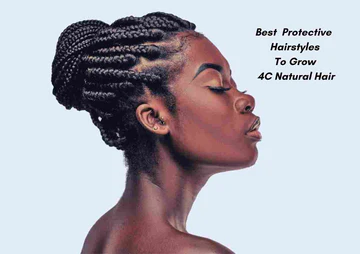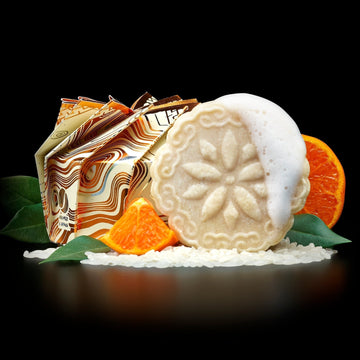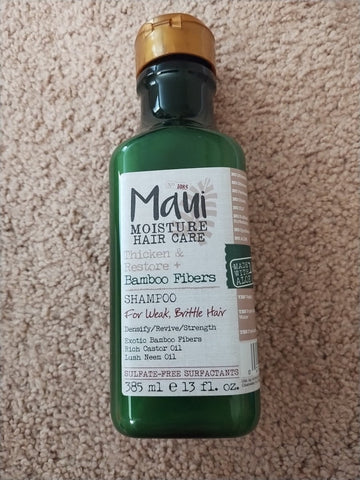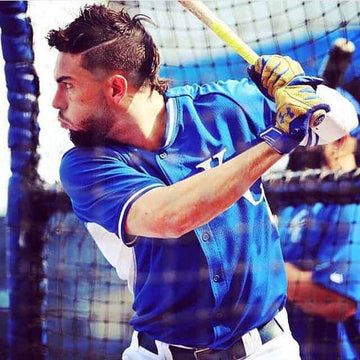If you want long lasting hairstyles for natural hair, you should check out these protective styles for 4c hair growth. These are also fantastic for using while sleeping.
If you’re someone with the 4C hair type always envying another with perfectly maintained 4C hair, then I’m sure you’re wondering how they manage to keep it so well!
Well, maintaining 4C hair can sometimes be a struggle, but protective hairstyles got you covered!
The reason 4C hair requires using protective hairstyles is because kinky and coily hair require to be more protected as compared to regular straight hair because it is more susceptible to damage.
Related: Best Shampoo And Conditioner For Type 4C Hair
Related: How to Deep Condition 4c hair
Here’s all you need to know about 4C hair
I’m sure that most of you are aware of the hair chart consisting of hair types ranging from 1A to 4C which has hair types like straight, wavy, curly and coily.
Well, of course all hair types require proper maintenance, but 4C hair requires much more maintenance because it is the curliest hair type which often tends to get very dry and succumbs to hair damage very easily.
Many people with the 4C hair type may often complain that their hair doesn’t seem to grow or takes very long to grow.
Well, I have to say that it is definitely a myth, because 4C hair does grow just like any other hair type and the reason for 4C hair having hindered hair growth could be because of improper or lack of hair care and maintenance.
One way you could protect your 4C hair from damage is by choosing to wear protective hairstyles and if you cannot think of one, this article will for sure help you find the perfect one for you!
Page Contents
Top Protective Styles for 4C Hair Growth 2022
1. the Senegalese Twisted Braids hairstyle
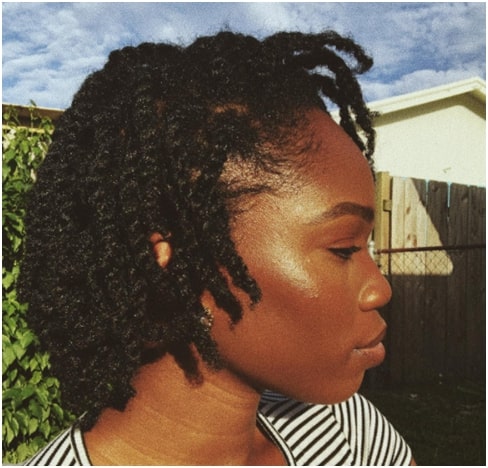
What is absolutely cool about getting these rope twists (as they are also called), is that they are very versatile and can be converted into making other flexible hairstyles like buns, ponytails and any style of your choice. They are created by twisting hair strands around each other forming a rope-like pattern.
2. the Fulani Braids hairstyle

Fulani braids are one of the most common protective hairstyles people choose. It can be done on natural hair or even with extensions. That’s why people with any hair length or hair type can get this style!
3. the Afro Puff hairstyle

If you are someone who wants to keep your natural hair exposed, but still protected then this is a nice hairstyle to get. While it looks pretty, it is easy to get and maintain as well. You can also experiment with the Afro puff style and section your hair into more parts to get more puffs.
4. the Natural Deep Wave Crochet Twist hairstyle

A lot of people go in for this hairstyle because it is considered to be one of the best and a low-maintenance protective hairstyle. the best part of getting this protective hairstyle is that it can be done even with your natural hair, without damaging it.
5. the Short Afro Ponytail hairstyle

Similar to the Afro puff hairstyle, the Afro ponytail is also a commonly worn protective hairstyle. It gives you the liberty to style your own hair, while also keeping it protected. When wearing this hairstyle, sufficiently moisturizing your hair ends is important since they are always exposed.
6. the Marley Twist hairstyle

A lot of people like getting Marley twists because of how they look. Most definitely classy and elegant! Those with hair textures more coarse, this hairstyle will blend perfectly with the person’s natural hair.
7. the Knotless Braids with Top Bun hairstyle
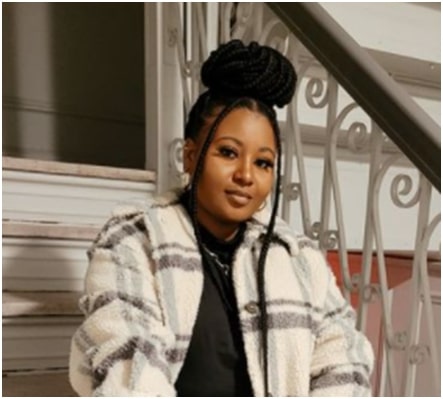
If you are someone who is worried about developing traction alopecia, knotless braids can definitely prevent this from happening. If you are looking to protect your scalp and hair health in the long run, this style is definitely a good choice!
8. the Updo Bun hairstyle

A lot of women choose updo hairstyles because they can literally be worn to any event, be it a formal gathering, official meeting or to a wedding! If you want to protect your natural hair and also flaunt it at the same time, an updo bun is the perfect style to choose.
9. the Bantu Knots hairstyle

The Bantu Knots are definitely one of the rarest types of protective hairstyles. They have been in fashion for many years and are still trending!
The only catch with getting this protective style, unlike the other protective styles, they cannot be kept in for too long, just around two weeks at a time.
10. the Crochet Braids hairstyle

If you are someone who is looking for an easy maintenance protective hairstyle, then this one should be your pick. While it is easy to maintain, you can also experiment with coloring and styling these crocheted braids.
11. the Head Wrap hairstyle

For all those who do not wish to get a natural and protective hairstyle, then this one’s perfect for you! It looks fancy, while it also does the job of protecting your hair and promoting hair growth as well. As there is no hairstyle in place, your natural hair is safe and since your hair is covered, the hair remains healthy.
12. the Classic Big Cornrow hairstyle

Cornrows are styles that always look good and can literally be worn by anyone with any hair length, hair type and texture. While they look stylish, they protect the hair at the same time.
What are protective hairstyles and why do we need them?

Before I get into the protective 4C hairstyles, let me give you a few details about protective hairstyles and tell you why you’d need them.
Very often, people with the 4C hair type tend to run out of ideas and ways to style and protect their natural 4C hair. While the hair is exposed, if not maintained properly, hair damage takes place.
Therefore, using protective styles for 4c hair growth will help keep the hair strands away from tugging or pulling of the hair (in order to hold the hairstyle in place).
And instead promote hair growth by using protective hairstyles like hair twists, braids, cornrows, buns, wigs (optional) and extensions (also optional).
The reason most people choose to use protective styles is to let their hair grow out well without any sort of external damage to inhibit proper hair growth.
Protective hair styling will also help protect the edges of the hair strands and prevent them from thinning out or developing split ends, while also keep them sufficiently moisturized.
But that being said, once you have got your protective hairstyle on keep them for at least one and a half to two months at a time in order to begin to see the new strands of hair growing.
This means proper pre and post styling treatment, sufficient moisturizing, avoiding product buildup and of course many such dos and don’ts, but yes, in the end it will all be worth it, so give it a try!
Frequently Asked Questions (FAQs) about Protective Hairstyles For 4C Hair Growth
1. What are the things I need to know when getting a protective hairstyle?
Also, washing, conditioning and moisturizing your hair before getting the protective style is very essential before getting it tucked in for some time.
After care or post-treatment is essential: Apart from washing and moisturizing, remember that protective hairstyles require protection while you sleep.
This means covering your head with a satin or silk scarf while you sleep or even sleeping on a silk or satin pillowcase. the reason for this is that while your hair touches any other fabric, there is friction created that can damage the strands.
2. How long are protective hairstyles to be worn, in order to observe hair growth?
That being said, do not keep the protective hairstyle on for longer than two months at a time because it can cause damage to the hair strands and make the hair lose its moisture and hydration.

